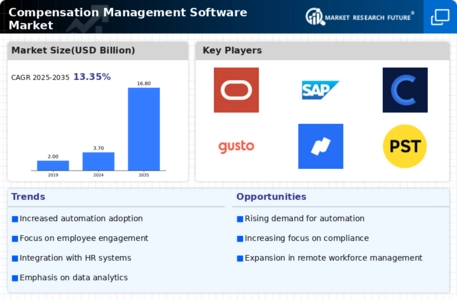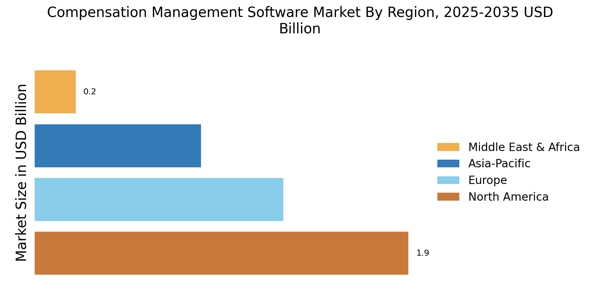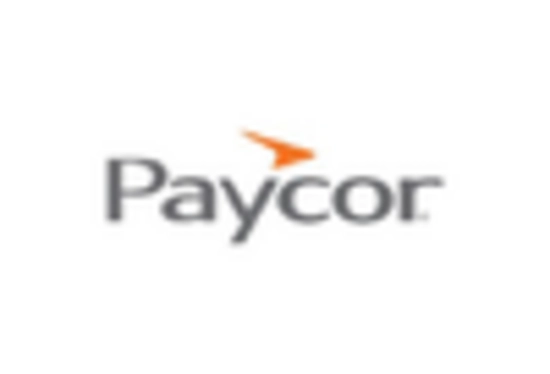The Compensation Management Software Market is currently characterized by a dynamic competitive landscape, driven by the increasing need for organizations to streamline their compensation processes and enhance employee engagement. Key players such as Workday (US), SAP (DE), and Oracle (US) are at the forefront, each adopting distinct strategies to solidify their market positions. Workday (US) emphasizes innovation through continuous product enhancements, focusing on user experience and data analytics. SAP (DE) leverages its extensive enterprise resource planning (ERP) capabilities to integrate compensation management seamlessly into broader HR functions. Oracle (US), on the other hand, is concentrating on cloud-based solutions, aiming to provide scalable and flexible compensation management tools that cater to diverse organizational needs. Collectively, these strategies contribute to a competitive environment that is increasingly focused on technological advancement and customer-centric solutions.
In terms of business tactics, companies are increasingly localizing their offerings to meet regional demands while optimizing their supply chains to enhance efficiency. The market appears moderately fragmented, with a mix of established players and emerging startups vying for market share. This competitive structure allows for a variety of solutions tailored to different organizational sizes and industries, fostering innovation and responsiveness to market needs.
In August 2025, Workday (US) announced a strategic partnership with a leading AI firm to enhance its compensation analytics capabilities. This collaboration is poised to enable organizations to leverage predictive analytics for more informed compensation decisions, thereby improving employee satisfaction and retention. Such a move underscores Workday's commitment to integrating advanced technologies into its offerings, positioning it as a leader in the market.
In September 2025, SAP (DE) launched a new module within its SuccessFactors suite, specifically designed to address the complexities of global compensation management. This initiative reflects SAP's strategy to cater to multinational corporations facing diverse regulatory environments. By providing tailored solutions, SAP enhances its value proposition, potentially increasing its market share among global enterprises.
In October 2025, Oracle (US) unveiled a significant update to its cloud-based compensation management platform, incorporating machine learning algorithms to optimize salary recommendations. This update not only enhances the platform's functionality but also aligns with the growing trend of AI integration in HR technologies. Oracle's focus on innovation through technology positions it favorably in a competitive landscape increasingly driven by digital transformation.
As of October 2025, the Compensation Management Software Market is witnessing trends such as digitalization, sustainability, and the integration of artificial intelligence. Strategic alliances among key players are shaping the landscape, fostering innovation and enhancing service offerings. Looking ahead, competitive differentiation is likely to evolve, with a shift from traditional price-based competition towards a focus on technological innovation, reliability in supply chains, and the ability to deliver customized solutions that meet the unique needs of organizations.


















Leave a Comment